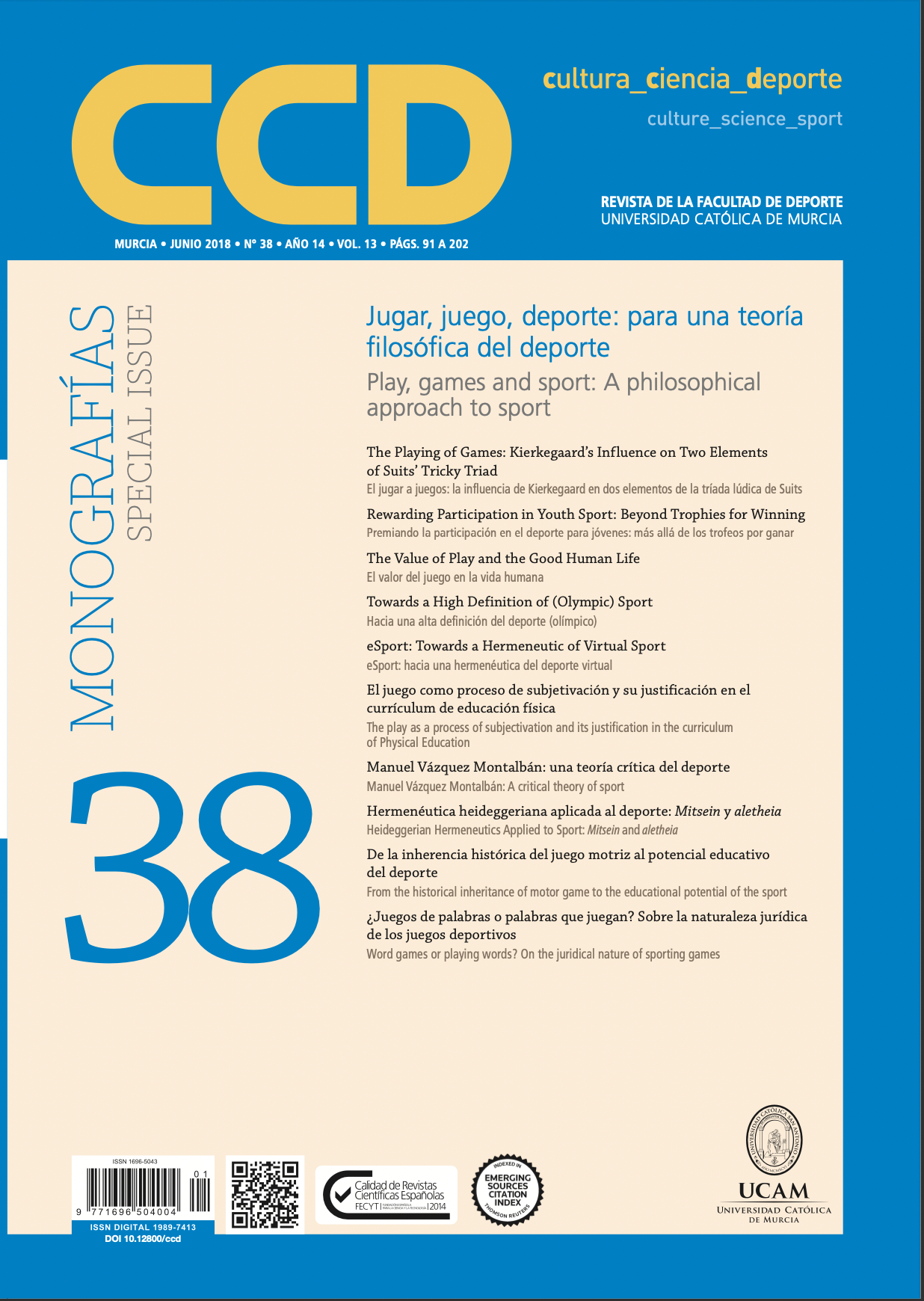Towards a High Definition of (Olympic) Sport. (Hacia una alta definición del deporte (olímpico)).
DOI:
https://doi.org/10.12800/ccd.v13i38.1068Abstract
The paper entertains the idea of sport as a heterogenous concept and focuses not on the boundaries of its extension (a paramount consideration in case of the problem of definition understood in the traditional way), but rather of its internal structure. I start with Bernard Suits’ definition of sport (offered in his paper The Elements of Sport), which is a plausible attempt to construct a homogenous definition of sport. According to this definition sports create a subset of games. However, in his later paper The Tricky Triad, Suits himself criticized this definition by introducing a new category of judged sports that are not games, and a fortiori cannot meet his former definition. This distinction not only overthrows the original definition, but also reveals a hidden heterogeneity in the domain of sport. I would like to supplement Suits’ critique of his own definition by another objection, which draws the second dividing line in the domain of sport, namely the distinction between kinetic and non-kinetic, mainly performative activities. These two distinctions taken together allow me to construct a conceptual map of sport (and especially Olympic sport) that I call The Olympic Sport Image (OSI). It encompasses the following fields: athletic games, judged sports, mind sports and art sports. I would like to call the offered theory the “High Definition of Sport” (HDS), since it gives an insight into the structure of sport as a heterogenous domain. To prove the usefulness of this model I am showing its applicability into the history of the programme of the Olympic Games (OG) and I’m comparing it with Suits’ triadic model.
Key words: tricky triad, Suits, Olympic sport, definition.
===
Resumen
Este artículo presenta la idea de que el deporte es un concepto heterogéneo y se centra no en las fronteras de su extensión (una consideración de central importancia en el caso del problema de la definición entendido al modo tradicional), sino en su estructura interna. Comienzo con la definición de deporte de Suits (ofrecida en su artículo The Elements of Sport), que es un intento plausible de construir una definición homogénea del deporte. Según esta definición, el deporte crea un subconjunto de juegos. Sin embargo, en un artículo posterior, The Tricky Triad, Suits mismo critica esta definición introduciendo una nueva categoría de juegos juzgados que no son juegos y, por fuerza, no pueden encajar con su primera definición. Esta distinción no sólo elimina la primera definición, sino que también revela una heterogeneidad oculta en el dominio del deporte. Yo complementaré la critica que Suits ofrece de su propia definición a través de otra objeción, la cual se basa en la segunda línea divisoria en el ámbito del deporte, a saber, la distinción entre kinético y antikinético, principalmente actividades performativas. Estas dos distinciones tomadas de modo conjunto me permiten elaborar un mapa conceptual del deporte (y especialmente del deporte olímpico) que denomino como la “Imagen del Deporte Olímpico” (IDO). Ésta incluye los siguientes campos: juegos atléticos, juegos juzgados, deportes mentales y deportes artísticos. Llamaría a esta teoría ofrecida aquí “Alta Definición del Deporte) (ADD), ya que proporciona una mirada dentro de la estructura del deporte como un ámbito heterogéneo. Para mostrar la utilidad de este modelo, mostraré su aplicación en la historia del programa de los Juegos Olímpicos (JJOO) y lo compararé con el modelo triádico de Suits.
Palabras clave: triada engañosa, Suits, Juegos Olímpicos, definición.
Downloads
Published
How to Cite
Issue
Section
License
The authors who publish in this journal agree with the following terms:
- The authors retain the copyright and guarantee the journal the right to be the first publication of the work as well as licensed under a Creative Commons Attribution License that allows others to share the work with recognition of the authorship of the work and the initial publication in this journal.














